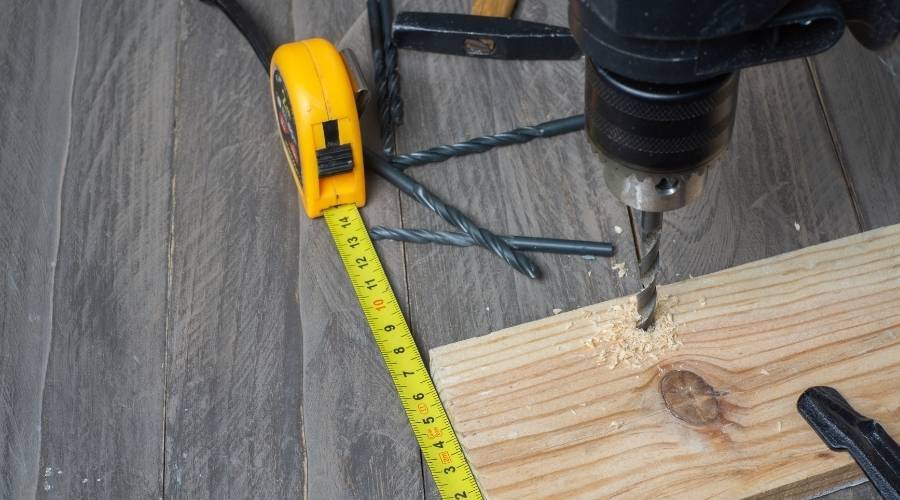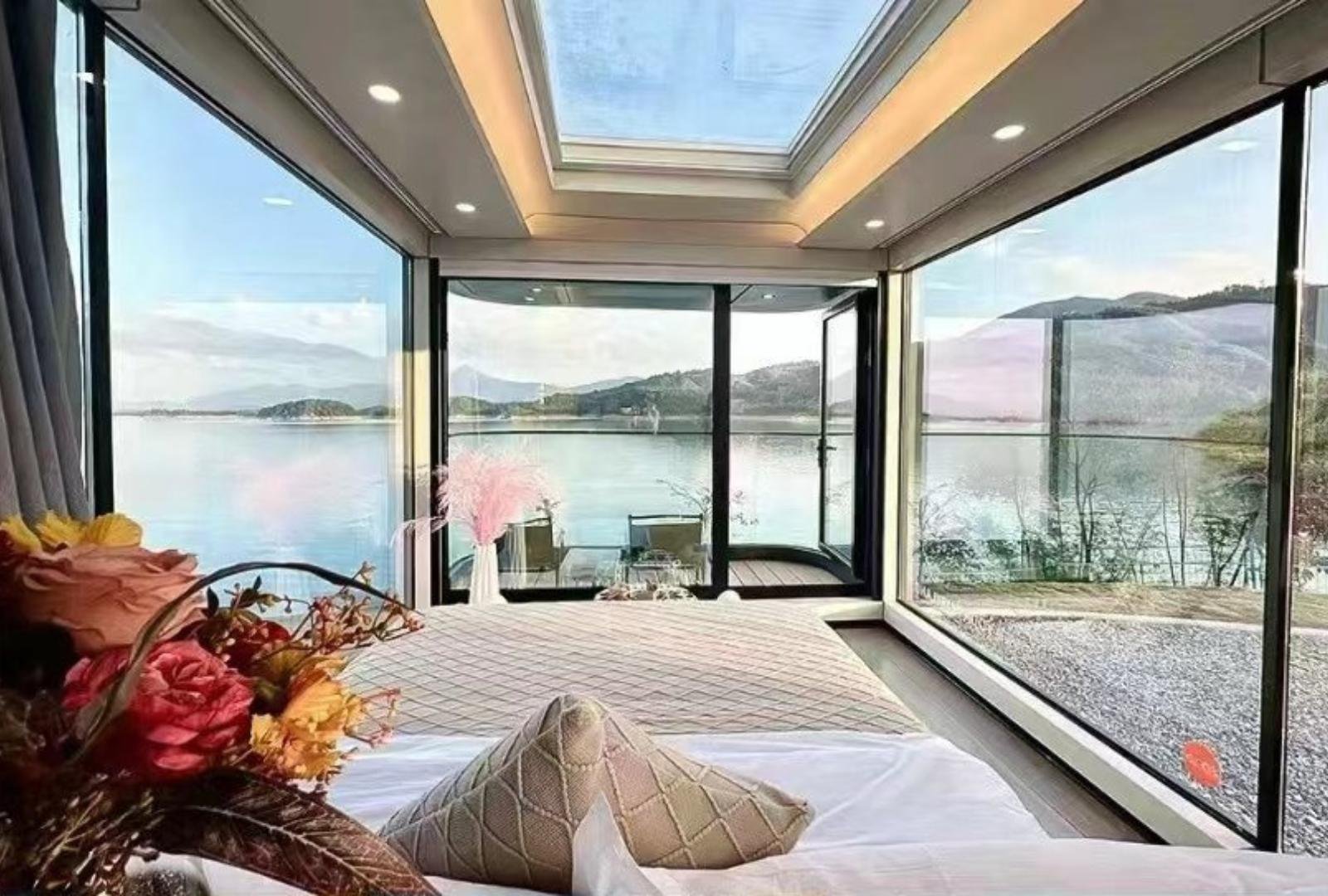Understanding Kit Homes
What Are Kit Homes?
So, kit homes—sometimes called catalog or mail-order homes—have been around since the early 1900s, born right here in North America. They’re kind of the no-fuss answer for anyone, whether you’re solo, raising a family, or starting a small business, who wants a cozy spot without breaking the bank. Think of them like a life-size Lego set, arriving in flat packs with everything pre-cut for you to piece together without much fuss. These homes stretch from a snug 60 square feet up to a spacious 1,000 square feet, suiting whatever needs you’ve got.
Now, if you’ve heard about prefab homes, they’re like kit homes’ modern cousins. Built in factories before being popped together at your site, they cut down on the time and bucks spent building. Just like kit homes, prefab ones come in flavors like modular and panelized, giving you room to customize your dream spot.
Benefits of Kit Homes
Why pick up a K’ome DIY project kit? Well, let’s break it down—if saving money and going green is your jam, these homes fit the bill. Check out these perks:

| Benefit | Description |
|---|---|
| Cost-Effective | Spending less is the whole game here; kit homes often mean fewer dollars and cents than your typical house. A survey says you could save anywhere from 20-30% compared to the usual way of building. |
| Customizable | Want your home to scream “you”? With loads of styles and designs, kit homes let us shape our space just right. |
| Sustainable Options | Going green’s easier with kit homes using eco-friendly materials and efficient systems that mesh with our sustainability aims. |
| Quick Assembly | Everything’s already cut out for you, meaning the building phase whizzes by—no weather woes slowing you down either! |
| No Hidden Costs | You get what you see with kit homes; the bills stay upfront, so you’re not blindsided by surprise expenses. |
And hey, it’s not just about the money or speed; diving into building your spot can be loads of fun! If you’re curious about diving deeper, there’s a wide range of affordable kit homes and kit homes for sale that’ll fit your wallet and way of living. Got a thing for steel-frame kit homes or small kit homes? Options are plenty and flexible.
Choosing a DIY Kit Home
When we decide to roll up our sleeves and dive into crafting a DIY home kit, we’ve got a few key things to mull over. This ensures that what we end up with is a dream fit for our wishes, needs, and, more importantly, our wallet.
Factors to Think About
- What’s the Damage?: Getting a good grip on our spending is vital. We must think beyond just the initial kit price—consider ground prep, permit fees, and those sneaky extra materials.
- Where’s it Going? The spot we pick matters big time. From handy supplies to local rules and whether Mother Nature plays nice—these all shape our choice of the kit home’s style.
- Room to Wiggle: Sorting out how much space we crave is key. Be it bedrooms, bathrooms, or hangout zones like the kitchen and lounge. Knowing what we need helps nail the layout right.
- When’s the Housewarming?: Got a date in mind for sipping fancy drinks in your new pad? Some kits snap together faster. Being clear on our timeline helps steer us to the ideal pick.
| Factor | What to Ponder |
|---|---|
| The Cost | Total dough, prep work, bureaucracy |
| The Place | Resources nearby, ground rules, and the weather |
| Space Needs | Bedrooms, washrooms, chill zones |
| When Done? | How fast can we wrap this up |
Making it Ours
The thrill of DIY kit homes? The sky’s the limit with how we make it ours! Depending on who’s selling, there are many ways to tweak and twist:
- Floor Plans: There’s usually a bunch to choose from, letting us pick what vibe matches our daily grind.
- Materials Galore: Whether it’s floor under your feet or the walls outside, we can put our stamp on materials, colours and finishes.
- Size It Up or Down: Some makers give the green light to move walls or throw in extra bits to better fit how we live.
Customizing turns a basic kit into a one-of-a-kind space that screams to us. Want more deets on different kits out there? Peek at our lineup of kit homes for sale.
Top Kit Home Brands
The market’s buzzing with stellar DIY kit home folks. Here’s a sneak peek into some notables:
- Shelter-Kit: Famous for top-notch pre-cut kits that even a rookie can whip up. They walk us through it every step of the way. Their kits can hit our driveway fast—think 5 weeks kind of fast.
- Allwood: Perfect for snug setups, like the Estelle 5, carving 106 square feet into smart little zones. Great for newbies, and you’ll zip through building in no time.
- Steel Frame Kit Homes: Masters of tough builds with steel bones, making them a match for any climate. Bad weather doesn’t push pause on these, so less stress all around.
Picking the perfect kit home shouldn’t just be a decision—it should be a journey. Armed with this info and our creative spirit, we can carve out a nest that ticks all our boxes. For those eyeing micro living, our options for small kit homes could hit the spot.
Building Your Kit Home
So, we’re diving into the adventure of building our very own kit home. Gotta say, this isn’t some casual DIY weekend plan. It’s more a “let’s get our act together” kind of deal. We need to prep like we’re going into battle—well, without the armor, but definitely with some serious planning. Whether we’re all gung-ho about building it ourselves or calling in the pros, knowing the drill is key.
Preparation and Planning
First off, let’s roll up our sleeves and get our ducks in a row. Think of it like prepping for the ultimate garden party—location is everything! We need to pick a spot that’s just right, get the okay from the powers-that-be (you know, the folks who hand out permits), and make sure we’re not putting our dream home where it’s not welcome. We also need to imagine how we want this masterpiece to look and feel. What size? What vibe? Toss those ideas around until we hit the sweet spot.
Putting together a timeline can be handy. Think of it as our road map—minus the fast food pit stops. It keeps us on track and lessens those head-scratching, delay-filled moments. Oh, and gathering tools and materials ahead of time? Crucial, like stocking up on snacks before a long Netflix binge.
| Task | Duration |
|---|---|
| Site Selection | 1-2 weeks |
| Permit Acquisition | 2-6 weeks |
| Material Sourcing | 2-4 weeks |
| Assembly | 4-12 weeks |
Assembling the Kit
Alright, once we’ve got everything sorted, it’s hammer time! The key here is like following a recipe when cooking—don’t go rogue unless you want a kitchen disaster. We need clear, step-by-step guides—thank you, Shelter-Kit, for being our instruction pal—and make sure we start with a solid foundation. Then, it’s onto walls and the roof; the cornerstones of any good zombie fortress.
Building from the bottom up is the way to go—no sense in putting the cart before the horse. Safety should be a front-and-center priority, too, because we’re not keen on starring in our DIY blooper reel.
DIY vs Professional Help
Now, do we get our hands dirty, or do we let the professionals earn their keep? Going the DIY route means we’re in for some hands-on satisfaction and maybe a few blisters to remember it by. It can be a budget-friendly choice, but it comes with a side of dedication and elbow grease.
On the flip side, getting someone else to swing the hammer might cost us more coin, but it’s a smoother ride, perfect for those of us who’d rather keep our nails unbroken. We could chill a little while the experts do their thing, knowing they’ve got the skills to make it all come together neatly.
At the end of the day, this decision hinges on our confidence level, how tricky our kit is, and what our wallet says. If we do decide to go all DIY, no shame in phoning a friend—or a pro—for a little guidance when things get tricky.
For more ideas or if you’re ready to jump in, why not check out some affordable kit homes for styles and budgets that might just fit the bill, or sneak a peek at kit homes for sale to find our next big project.

Kit Home Regulations
Putting together a DIY kit home is like building a giant puzzle you can live in – but there’s a guidebook full of rules we need to follow. Whether our house stays upright depends on more than just hammering nails. Local laws and building codes also need our attention as much as a toddler with a crayon approaching a freshly painted wall. So what’s on the menu here? Well, there’s permits and zoning, building codes, and inspections. Get ready to dive into these exciting topics.
Permits and Zoning
Before we set the first nail, we’ve got some paperwork to tackle first. It’s like getting a backstage pass to the house-building concert—building permits, electrical permissions, and plumbing permits are our golden tickets. These aren’t just pieces of paper; they’re the rules of our game set by local powers to keep everyone safe and happy.
Each area has its ideas about where and how you should set up camp with your kit home. Think of it like a neighbourhood theme party; you want to bring the right decorations so you don’t clash with the vibe. To avoid getting slapped with a fine or stuck waiting endlessly, understanding these rules is key. A tip? Bringing in a pro to help navigate the permit labyrinth is never a bad idea.
| Permit Type | What It Gets You |
|---|---|
| Building Permit | The green light to start construction. |
| Electrical Permit | Clearance for all things lights and wires. |
| Plumbing Permit | The go-ahead for turning waterworks dreams into reality. |
Compliance with Building Codes
Your kit home could come in styles from modern minimalist to cottage-core cute, blending into the neighbourhood like that perfect chameleon. They often roll out with blueprints designed to match or top national building standards. If your kit’s manufacturer can show that they’re up to scratch with local rules, things get a lot easier.
Authorities love a good reputation. If our kit’s designed by a well-known company with shiny certificates, that should paint us favourably in their eyes. We need to double-check that our kit outdoes the local building codes — impressing the local rule-keepers is part of the gig.
Inspections and Approvals
As our new home rises, inspections are our new best friend, ensuring all is officially kosher. From the foundation to the doorknobs, each bit gets looked over. Sticking to the approved plans like a list on a grocery run is super important. Some jurisdictions insist on having licensed wizards—er, professionals—handle complex things like piping and wiring, just to make sure everything doesn’t go kaboom.
The story of getting approvals can be a lot rosier if our kit is in tune with the local aesthetic. If we spice up the neighbourhood in a good way, official folks might just give us the thumbs-up a bit quicker.
Getting our heads around the rules for DIY kit homes is like reading the manual before you start sticking pieces together – it just makes the journey smoother. Want to peek at some budget-friendly ways to nail this? Swing by affordable kit homes or scan through kit homes for sale.
Kit Home Features
When it comes to building our own homes, the allure of DIY kit homes can’t be denied. These offer more than just the beauty of unique designs—they come packed with features which appeal to our practical side too. Knowing the ins and outs of architectural styles, materials, and energy efficiency helps us make smart choices that suit our future dreams.
Architecture Styles
DIY kit homes are one-size-fits-all. We’re spoiled for choice with a variety of architecture styles that cater to our needs and lifestyle. Here are some of the fan favourites:
| Style | Description |
|---|---|
| Contemporary | A modern look with sleek, clean lines |
| Cottage | All about that cozy vibe and classic charm |
| Minimalist | Keeps it simple and functional—nothing extra |
| Farmhouse | Rustic feels meet homey comforts |
| Bungalow | Low-set with a roomy porch, perfect for lounging |
Picking the right style means our kit home won’t just serve as a roof over our heads, but will resonate with who we are.
Materials and Sustainability
A big perk of going the prefabricated route, including with our home kits, is how earth-friendly they can be. Many kit homes use top-notch, green materials that do Mother Nature a solid. Check out these materials:
| Material | Why They’re Great |
|---|---|
| Lumber | Locally sourced to keep the planet happy |
| Steel | Tough as nails, and stands up to bugs and rot |
| Eco-friendly Insulation | Keeps the heat bills low and comfort high |
| Recycled Materials | Gives yesterday’s stuff a new life and cuts down on waste |
Focusing on sustainable materials makes these homes ideal for those of us who care about our planet’s health. Plus, smart choices mean we can build a place that mirrors what matters to us.
Energy Efficiency
Today’s DIY kit homes are energy savers’ dreams. They come with features that lighten both our utility bills and our carbon footprint. Some of the highlights in this arena include:
| Feature | Benefit |
|---|---|
| Solar Panels | Soak up the sun, cut down electricity costs |
| Energy-efficient windows | Keep your heat or air con from escaping—smart move |
| Smart home technology | Auto tunes energy use for big savings |
| High-performance HVAC systems | Keeps things comfy without using extra energy |
Choosing energy-efficient options when we build our kit homes not only saves us money but also keeps us eco-friendly. You can sneak a peek at our collection in the kit homes for sale section.
By diving into the features of DIY kit homes, we’re doing more than just finding a place to crash—we’re crafting spaces that are comfy, green, and tailor-made for the way we live.
Kit Home Purchasing Guide
Buying a DIY kit home is a thrilling journey for folks, families, or even business owners. To make smart choices, we’ve got to stick to a game plan: dig around for info, weigh up the vital stuff, and get a handle on the nitty-gritty of snagging our new digs.
Digging Into Kit Homes
When diving into DIY kit homes, it’s wise to kick off by scoping out the different types we’ve got on offer. Comparing options like affordable kit homes and small kit homes gives us a better sense of what suits our pockets and needs. Kit homes are all the rage now, giving us a shot at putting up either our main crib or a chill cabin retreat.
Here’s what we should keep an eye on during our info hunt:
| Aspect | Details |
|---|---|
| Companies | Check out honest manufacturers with a good rep in the kit home world. Dive into reviews and stories from customers. |
| Material Options | Look into various building materials like wood or steel frame kit homes, each bringing its perks. |
| Assembly Requirements | Find out if the kit’s a full package or if we have to sort out things like foundation, electrics, and plumbing ourselves. |
Things to Keep in Mind
Before splashing out, we’ve gotta mull over several aspects influencing our pick:
| Consideration | Description |
|---|---|
| Building Codes | Get the lowdown on local codes and rules to play it safe. This covers zoning and utility access, too. |
| Ground Condition | Size up the plot where the kit home will land to make sure it’s up to snuff for the build we’ve got planned. |
| Customisation | Some kits let us mix it up design-wise. Think about whether we want to go custom or stick with a ready-made design. |
Getting Things Organised and Counting Costs
Getting our kit home isn’t just about the sticker price. We’ve got to jot down these potential costs:
| Cost Component | Estimated Cost Range |
|---|---|
| Site Preparation | £2,000 – £10,000 (depends on land condition) |
| Foundation Work | £5,000 – £15,000 (type of foundation affects cost) |
| Utilities Installation | £1,500 – £5,000 (for water, electricity, and sewage) |
| Professional Help | Bring in extra costs if hiring folks for setup or specific bits, varying heaps based on location and job difficulty. |
By scoping out our options, thinking through key factors, and getting a grip on logistics and potential costs, we can pick the DIY kit home that hits the mark. This sets us up for comfy, private, and wallet-friendly living in Australia. For anyone keen, there are plenty of kit homes for sale to help make building our dream pad a done deal.






